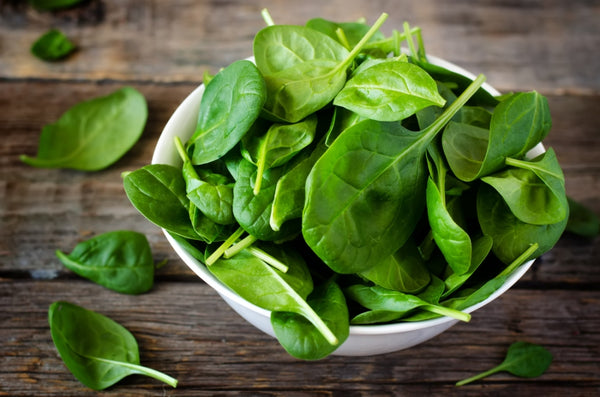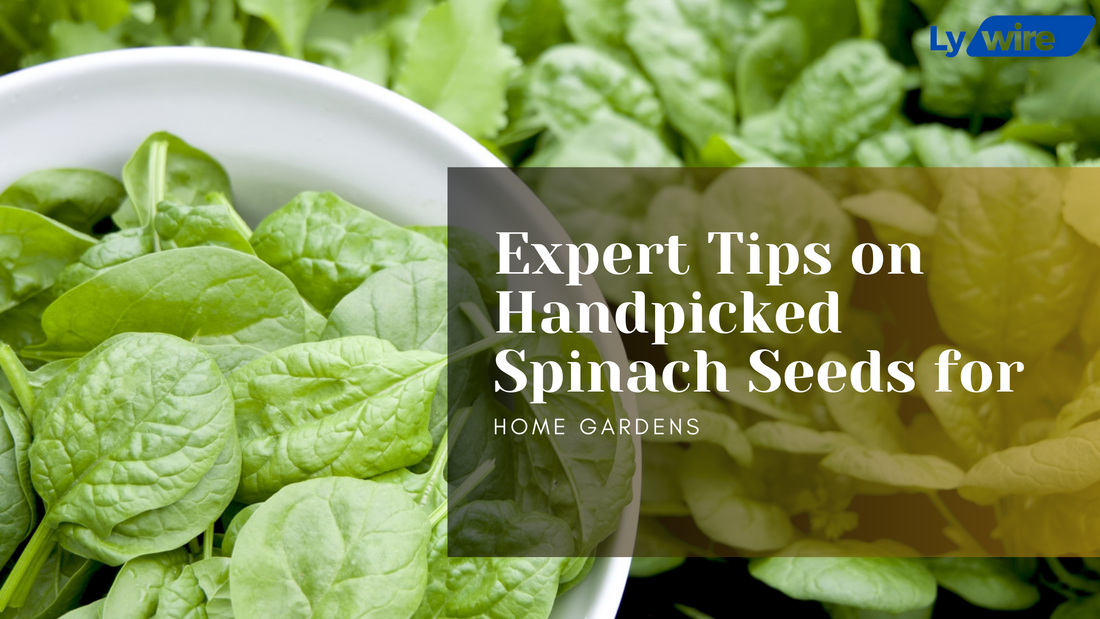Spinach, a nutrient-packed, leafy green, is a favorite among home gardeners due to its versatility and ease of cultivation. Whether you’re a seasoned gardener or a beginner, selecting the right spinach seeds and following expert tips can make all the difference in achieving a lush, productive garden. This comprehensive guide will walk you through everything you need to know about handpicking spinach seeds, planting, and maintaining your crop for optimal results.

Why Grow Spinach in Your Home Garden?
Spinach is not only delicious but also highly nutritious. It’s rich in vitamins A, C, K, and iron, making it a powerhouse addition to your meals. Growing spinach at home ensures you have access to fresh, pesticide-free greens year-round. Additionally, spinach is a fast-growing crop that thrives in cool weather, making it ideal for spring and fall planting.
How to Choose the Best Spinach Seeds
Selecting the right seeds is the first step toward a successful harvest. Here are some factors to consider:
Variety Selection
- Savoy Spinach: Known for its crinkled leaves and cold tolerance, perfect for fall planting.
- Flat-Leaf Spinach: Easier to clean and ideal for cooking or salads.
- Semi-Savoy Spinach: A hybrid with slightly crinkled leaves that combines easy cleaning with good disease resistance.
Seed Freshness
- Always buy fresh seeds as spinach seeds lose viability quickly. Look for seeds that are less than a year old.
Climate Compatibility
- For warm climates, choose heat-resistant varieties like New Zealand spinach.
- In cooler regions, opt for hardy varieties that can withstand frost.
Organic vs. Non-Organic
- Organic seeds are free from synthetic chemicals and are better suited for eco-friendly gardening practices.

Preparing Your Garden for Spinach
A well-prepared garden sets the stage for healthy spinach growth:
Soil Requirements
- Spinach thrives in loose, well-draining soil rich in organic matter.
- The soil should be slightly acidic to neutral (pH 6.0–7.5).
Location
- Choose a sunny spot with partial shade during hot afternoons to prevent bolting (premature flowering).
Soil Preparation
- Loosen the soil at least 12 inches deep to accommodate spinach’s deep taproots.
- Add compost or aged manure to enrich the soil with nutrients.
Planting Spinach Seeds
Timing and technique are crucial when planting spinach seeds:
When to Plant
- Plant seeds 4–6 weeks before the last frost in spring or 6–8 weeks before the first frost in fall.
- For continuous harvests, sow new seeds every two weeks during the growing season.
How to Plant
- Sow seeds ½ inch deep and 2 inches apart in rows spaced 12–18 inches apart.
- Cover lightly with soil and water gently but thoroughly.
Germination Tips
- Soak seeds in water for 24 hours before planting to speed up germination.
- Maintain consistent soil moisture during germination.

Caring for Your Spinach Plants
Proper care ensures healthy growth and high yields:
Watering
- Keep the soil consistently moist but not waterlogged.
- Water early in the morning to minimize fungal diseases.
Thinning Seedlings
- Thin seedlings to 3–4 inches apart once they reach 2 inches tall. This prevents overcrowding and promotes robust growth.
Fertilizing
- Apply a nitrogen-rich fertilizer every few weeks to encourage leafy growth.
- Avoid over-fertilizing as it can lead to excessive leafiness at the expense of flavor.
Weed Control
- Mulch around plants to suppress weeds and retain soil moisture.
Pest and Disease Management
Spinach is relatively low-maintenance but can be affected by pests and diseases:
Common Pests
- Aphids: Spray plants with neem oil or soapy water.
- Leaf miners: Remove affected leaves promptly.
Diseases
- Downy mildew: Ensure proper spacing between plants for good air circulation.
- Fusarium wilt: Rotate crops annually to prevent soil-borne pathogens.
Organic Solutions
- Use companion planting (e.g., marigolds) to deter pests naturally.
- Introduce beneficial insects like ladybugs to control aphids.

Harvesting Your Spinach
Knowing when and how to harvest spinach is key to enjoying its full flavor:
When to Harvest
- Baby leaves: Ready in about 20–30 days after planting.
- Mature leaves: Harvest within 40–50 days.
How to Harvest
- Use scissors or a sharp knife to cut outer leaves first, allowing inner leaves to continue growing.
- For a full harvest, cut the entire plant at soil level when it reaches maturity.
Storage Tips
- Store harvested spinach in an airtight container in the refrigerator for up to a week.
- For longer storage, blanch and freeze spinach leaves.
Bonus Tips for Maximizing Your Spinach Yield
- Practice successional sowing every two weeks for continuous harvests throughout the season.
- Use raised beds or containers if garden space is limited.
- Protect young plants from extreme temperatures using row covers or cold frames.
Growing spinach from handpicked seeds is a rewarding experience that provides fresh, nutritious greens right at your doorstep. By selecting high-quality seeds, preparing your garden thoughtfully, and following expert care tips, you can enjoy bountiful harvests season after season.
Start your journey toward self-sufficiency today by planting spinach in your home garden—it’s easy, sustainable, and incredibly satisfying!

